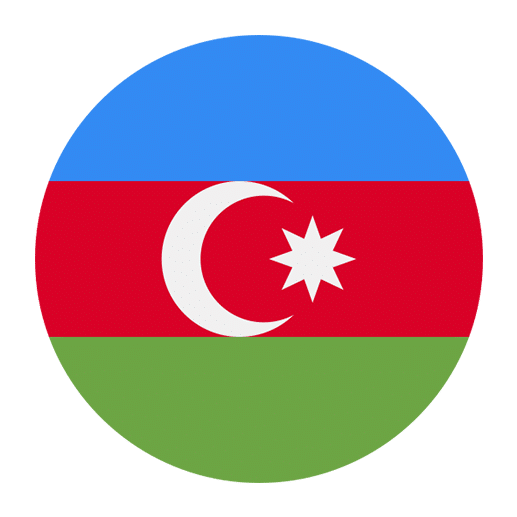Learning a new language is an exciting and enriching experience, and Azerbaijani is no exception. As part of the Turkic language family, Azerbaijani offers a unique blend of linguistic features that can be both challenging and rewarding to master. One of the fundamental aspects of any language is its adjectives, which serve to describe and quantify nouns. In this article, we will delve into the differences between descriptive and quantitative adjectives in Azerbaijani, offering detailed explanations, examples, and tips for effective usage.
Understanding Adjectives
Adjectives are words that describe or modify nouns, providing additional information about an object’s size, shape, age, color, origin, or quantity. In Azerbaijani, like in English, adjectives are essential for creating vivid and precise descriptions. However, the way adjectives are used and formed in Azerbaijani can differ significantly from English.
Descriptive Adjectives
Descriptive adjectives are used to provide information about the qualities or characteristics of a noun. They help paint a more detailed picture by answering questions like “What kind?” or “Which one?” In Azerbaijani, descriptive adjectives typically follow the noun they modify, unlike in English where they precede the noun.
For example:
– English: A beautiful flower
– Azerbaijani: Gözəl bir çiçək (Gözəl = beautiful, bir = a, çiçək = flower)
Here are some common descriptive adjectives in Azerbaijani:
– Böyük (big)
– Kiçik (small)
– Uzun (long)
– Qısa (short)
– Yaxşı (good)
– Pis (bad)
– Ağ (white)
– Qara (black)
– Gözəl (beautiful)
– Çirkin (ugly)
Usage Tips for Descriptive Adjectives
1. **Position**: Descriptive adjectives usually follow the noun they modify. This is a key difference from English and requires some practice to get used to.
2. **Agreement**: Unlike some languages, Azerbaijani adjectives do not change form based on the gender or number of the noun. This simplifies their usage compared to languages like Spanish or French.
3. **Intensifiers**: To emphasize the quality described by an adjective, you can use intensifiers such as “çox” (very) or “lap” (extremely). For example, “çox gözəl” (very beautiful) or “lap böyük” (extremely big).
Quantitative Adjectives
Quantitative adjectives, on the other hand, provide information about the quantity or amount of the noun they modify. These adjectives answer questions like “How many?” or “How much?” In Azerbaijani, quantitative adjectives also follow the noun they modify, similar to descriptive adjectives.
For example:
– English: Three apples
– Azerbaijani: Üç alma (Üç = three, alma = apple)
Here are some common quantitative adjectives in Azerbaijani:
– Bir (one)
– İki (two)
– Üç (three)
– Dörd (four)
– Beş (five)
– Çox (many/much)
– Az (few/little)
– Bütün (all)
– Bir neçə (a few)
– Bir az (a little)
Usage Tips for Quantitative Adjectives
1. **Position**: Just like descriptive adjectives, quantitative adjectives usually follow the noun in Azerbaijani.
2. **Specificity**: When using numbers, the noun remains singular. For example, “iki kitab” (two books) uses the singular form of “kitab” (book).
3. **Context**: In some contexts, you may need to specify the type of quantity, such as “bir neçə” (a few) or “bir az” (a little), to provide a clearer picture of the amount.
Combining Descriptive and Quantitative Adjectives
In Azerbaijani, it is common to use both descriptive and quantitative adjectives together to provide a more detailed description of a noun. When combining these adjectives, the order is typically: noun + quantitative adjective + descriptive adjective. This is different from English, where the order is usually: quantitative adjective + descriptive adjective + noun.
For example:
– English: Three beautiful flowers
– Azerbaijani: Üç gözəl çiçək (Üç = three, gözəl = beautiful, çiçək = flower)
Here are a few more examples:
– English: Five small books
– Azerbaijani: Beş kiçik kitab (Beş = five, kiçik = small, kitab = book)
– English: Two large houses
– Azerbaijani: İki böyük ev (İki = two, böyük = large, ev = house)
Practice and Application
To effectively learn and apply descriptive and quantitative adjectives in Azerbaijani, consistent practice is key. Here are some practical tips to help you master these adjectives:
1. **Flashcards**: Create flashcards with common descriptive and quantitative adjectives along with their English translations. Regularly review and practice these flashcards to reinforce your vocabulary.
2. **Language Exchange**: Engage in language exchange with native Azerbaijani speakers. Practice using descriptive and quantitative adjectives in conversations to gain real-life experience.
3. **Reading and Writing**: Read Azerbaijani books, articles, and other written materials. Pay attention to how adjectives are used in context. Additionally, practice writing sentences and short paragraphs using descriptive and quantitative adjectives.
4. **Listening**: Listen to Azerbaijani music, podcasts, and watch movies or TV shows. This will help you get accustomed to the natural use of adjectives in spoken language.
5. **Exercises**: Complete grammar exercises specifically focused on adjectives. Many language learning resources offer exercises that can help you practice and reinforce your understanding.
Conclusion
Understanding the differences between descriptive and quantitative adjectives in Azerbaijani is essential for effective communication. While the position of adjectives in Azerbaijani may differ from English, with practice and consistent exposure, you can master their usage. Whether you’re describing the beauty of a flower or counting the number of apples, adjectives play a crucial role in painting a vivid picture in your conversations and writings.
By incorporating the tips and strategies outlined in this article, you can enhance your proficiency in Azerbaijani and gain confidence in using both descriptive and quantitative adjectives accurately. Remember, language learning is a journey, and every step you take brings you closer to fluency. Happy learning!

